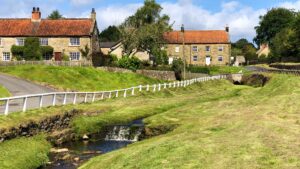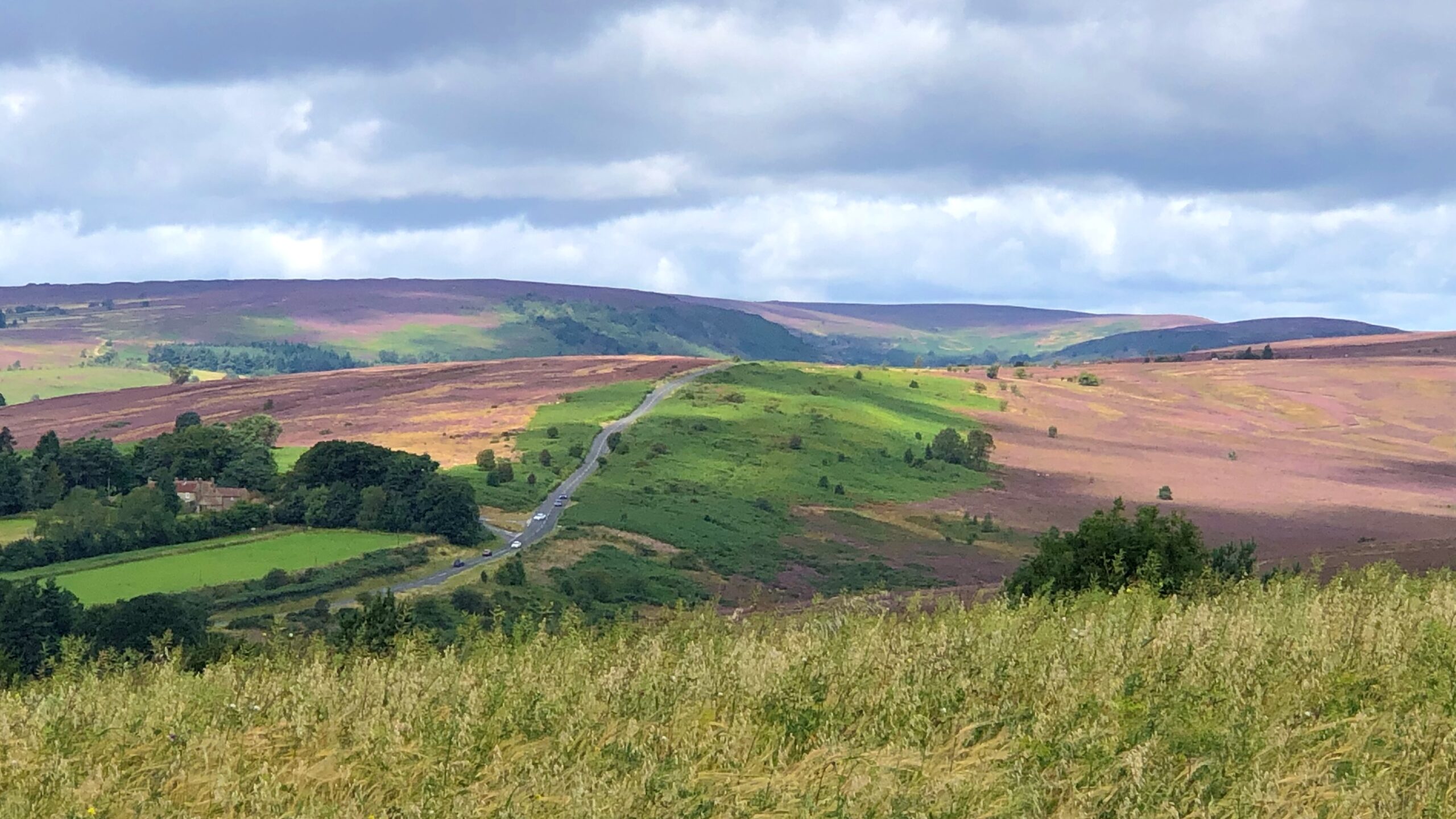The North York Moors, with their picturesque dales, lure photographers like moths to a candle. However, lurking between these dales are the ‘riggs’—or ridges—seldom graced by the eyes of admirers, yet bearing the heavy burden of being the ancient arteries of communication since time immemorial. Today’s photograph shows the southern end of Blakey Ridge, shortly before it descends to that paragon of tourist traps, Hutton le Hole, lurking just beyond the crest of the hill.The contrast of the green bracken and the purple heather is, I find, quite pleasing enough to the eye.

For Hutton le Hole, ever eager to please, offers diversions for all, particularly for children, who take great delight in clambering over the hummocky green beside the babbling Hutton Beck. The village is a veritable smorgasbord of quaint delights: craft coffee shops, gift emporiums, inns, and, naturally, the heather moors all jostle for one’s attention. We had grand designs on visiting The Ryedale Folk Museum, where one might view the accumulated paraphernalia of bygone ages housed in recreated cruck dwellings, but, shockingly, it was shut on a Friday. A Friday! One might think they were attempting to preserve the peace, but surely such consideration is out of place here.
The village name, Hutton le Hole, has always struck me as suspiciously exotic. With my schoolboy French, I detect a whiff of Gallic influence. But originally dubbed “Hutton under the Hegh,” this village cowers at the base of a steep incline, which may or may not be a clue to the origin of its name. The jury’s out. The locals, hardy souls, once toiled on the surrounding higher ground, grazing their livestock on the expansive moors. In the 11th century, Norman invaders decided to stake their claim, establishing farms and manors, as conquerors are wont to do. Later the monks from Lastingham were gifted vast tracts.1Ruston, John. “The Ryedale Story.” Ryedale District Council. 1986.
Over the centuries, the lands passed through various hands—noble families and so forth. In the 17th century, a band of Quakers descended upon the area, fashioning their homes in a style distinctly their own and setting up weaving enterprises to provide the local merchants with yet another source of income.
Through the ages, the village persisted as a farming community, its cottages, barns, and schoolhouses standing as relics from the 18th and 19th centuries. Today, Hutton le Hole remains as charming as ever, its history as rich as the hordes of visitors it attracts. Peace and solitude, however, are in short supply—one might be hard-pressed to find a moment’s respite from the endless parade of tourists.
- 1Ruston, John. “The Ryedale Story.” Ryedale District Council. 1986.

Leave a Reply